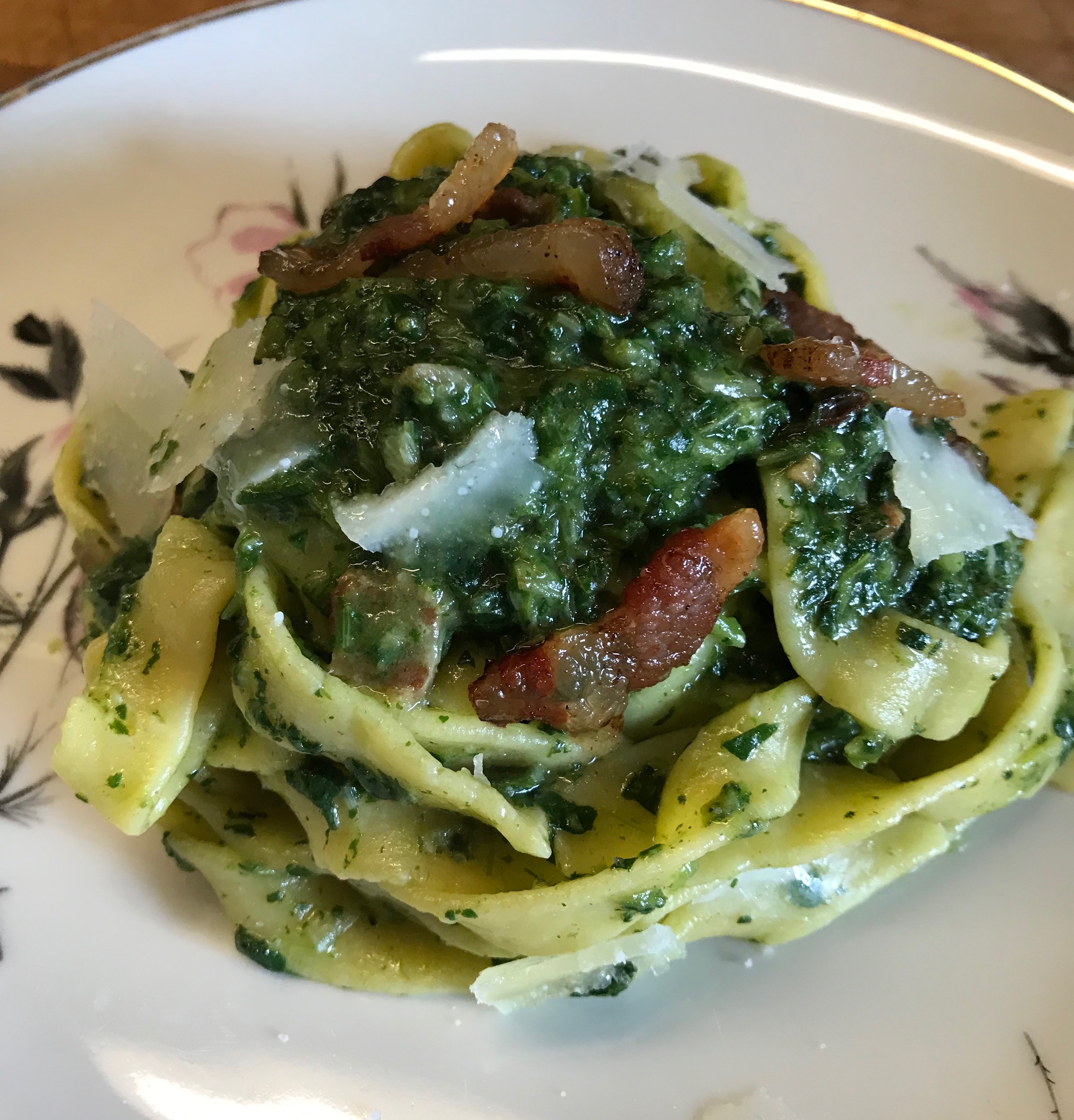If I have to think of a sound or a taste that reminds me of my childhood in the lower Lazio region, my mind immediately goes to the tradition of making pasta at home for Sunday lunch.
A sound in my earliest memories still echoes in my mind and is that of the rolling pin on the wooden top, the 'spianatoia' (pastry board), which repeated almost like a metronome. Few people know it but pasta had to make some noise to be really 'special'.
Aunt Peppa was a master in the art of homemade pasta and her sheets were perfectly round and always of the same thickness, and this is the memory of many of us. And when the pasta 'popped' we knew we'd have an unforgettable Sunday. The homemade pasta in all its forms: fettuccine, 'fregnaquanti' (the tagliolini of my parts), maltagliati (flat pasta), quadrucci (small squares of pasta), cannelloni, was the soul of Sunday lunch.
We had 4 chickens that I counted, but there were those who had a parrot. The few eggs of our hens were perfect for the purpose, then the flour, the hands of my aunt and nothing more. Mattarello (rolling pin) and spianatoia, as well as wooden spoons all made strictly from beechwood, were produced in Carpineto Romano, I do not know if there is still someone who makes them, it would be nice to find them.
I think that egg pasta embodies the culinary tradition of lower Lazio more than any other element. It is open to thousands of variations and leaves the imagination free, from traditional recipes to small personal interpretations, it's always good!
They are reopening small mills that are starting again to grind the ancient grains rediscovered by local farmers.
Recipe of the Amatriciana alla Cicoria
Amatriciana is to Rome as the Colosseum is to Sampietrini, which for those who do not know are those stones shaped truncated cone of dark colour with which many streets are paved in the centre of Rome. Once they all came from the lava flow near the tomb of Cecilia Metello where the Appia passes. Today that lava is in the Appia Antica Park and the Sampietrini arrives from other places.
Amatriciana is a simple recipe, almost austere. In the beginning it was the 'gricia' pasta, guanciale (cured pigs cheeks) and pecorino and pepper, then tomato was added. It takes its name from Amatrice and was the pasta of the shepherds and in the mountains there were not many tomatoes. Adding or removing an element made the variants endless.
The pork cheek must be slowly melted in an iron frying pan until it becomes crispy. Then add the tomato that cooks in the melted fat without oil, again because the shepherds had no oil. Pecorino is added at the service of pasta and nothing else.
As I said this base lends itself to a thousand variations: this time I made it by removing the tomato and adding chicory from the field previously freshly blanched and cut up with a knife.
The initial taste is a bit 'bitter, but then it wins you over. A taste for this season.
An to drink? a Cesanese all my life!!








Follow us